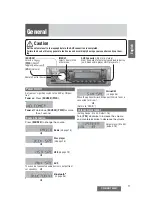SW9, SW10 and SW11 - Power Sourcing Modes
The RJ-45 ports can be configured to support different powering modes. The
powering modes include Alternative A (supporting power on pins 1,2 and 3,6),
Alternative B (supporting power on pins 4,5 and 7,8), legacy Power Devices (PDs)
that use large capacitance for detection (supporting pins 4,5 and 7,8) and legacy
VoIP phones (supporting reverse polarity on pins 4,5 and 7,8).
PoE Modes
SW9
SW10
SW11
1 Fiber 1 RJ-45
2 Fiber 1 RJ-45
Port 2
Port 3
DOWN DOWN
N/A
IEEE Alt A
IEEE Alt A
UP
DOWN
N/A
IEEE Alt B
IEEE Alt B
DOWN
UP
N/A
Large Capacitor
Detection
Large Capacitor
Detection
UP
UP
N/A
Legacy VoIP
Legacy VoIP
Power Sourcing Modes for Models with 1 RJ-45 Port
PoE Modes
SW9
SW10
SW11
1 Fiber 2 RJ-45
2 Fiber 2 RJ-45
Port 2
Port 3
Port 3
Port 4
DOWN DOWN DOWN
IEEE Alt A
IEEE Alt A
IEEE Alt A
IEEE Alt A
DOWN DOWN
UP
IEEE Alt A
IEEE Alt B
IEEE Alt A
IEEE Alt B
DOWN
UP
DOWN
IEEE Alt B
IEEE Alt A
IEEE Alt B
IEEE Alt A
DOWN
UP
UP
IEEE Alt B
Legacy VoIP
IEEE Alt B
Legacy VoIP
UP
DOWN DOWN
Large Capacitor
Detection
IEEE Alt A
Large Capacitor
Detection
IEEE Alt A
UP
DOWN
UP
Large Capacitor
Detection
IEEE Alt B
Large Capacitor
Detection
IEEE Alt B
DOWN
UP
UP
Legacy VoIP
IEEE Alt A
Legacy VoIP
IEEE Alt A
UP
UP
UP
Legacy VoIP
Legacy VoIP
Legacy VoIP
Legacy VoIP
Power Sourcing Modes for Models with 2 RJ-45 Ports
Select the appropriate powering source option based on the PD type. Use the
following table to determine the compatibility of the PD.
PD Type
PSE Type
Alternative A
Alternative B
Large Capacitor Legacy VoIP (Cisco)
IEEE 802.3 af
Yes
Yes
Yes
No
IEEE 802.3 at*
Yes
Yes
Yes
No
Legacy VoIP Phones
No
No
No
Yes
Large Capacitor
No
No
Yes
No
*Requires FPoE+/S models
Power Sourcing Compatibility
Page 7
RJ-45 Pinout
PoE Modes
Alternative A
Alternative B
Legacy VoIP
1
Vport Positive
2
Vport Positive
3
Vport Negative
4
Vport Positive
Vport Negative
5
Vport Positive
Vport Negative
6
Vport Negative
7
Vport Negative
Vport Positive
8
Vport Negative
Vport Positive
Voltage Polarity for PoE Modes
NOTE: Alternative A and Alternative B pinouts are compliant with IEEE802.3af and
IEEE802.3at specifications. Power is applied to center tap of transformers for both
Alternative A and Alternative B pinouts per IEEE802.3at. Power is applied to center
tap of transformers for Legacy VoIP pinout, but polarity is reversed.
SW12 and SW13 - Link Modes
The module supports Link Segment and Asymmetrical Link Propagate. See
Appendix A for Link Mode block diagrams.
Link Segment
In Link Segment mode, all ports operate independently. A loss of a receive link signal
will only affect the port detecting the loss of signal. All the other ports will continue
to generate a link signal. A loss of link on the RJ-45 port will only affect the RJ-45
port, and the other ports will remain unaffected.
Asymmetrical Link Propagate
In Asymmetrical Link Propagate mode, faults are propagated based on the port
notation. Port 1 to Port 2 notation indicates the direction the loss of link signal will
propagate. A loss of receive link on the fiber optic Port 1 causes the RJ-45 Port 2 to
drop its link due to the propagated state (Port 1 to Port 2). The loss of link on the
RJ-45 Port 2 does not cause the loss of link to propagate. The loss only propagates
in the Port 1 to Port 2 direction. See Port Configurations on page 4.
Note: A loss of link or loss of signal is when the optical receiver on the media converter
can no longer detect the presence of an optical signal.
Note: On models with 2 fiber ports or 2 RJ-45 ports, both ports of the same media type
must be in link fault condition before the fault will propagate.
Page 8
Содержание OmniConverter FPoE+/S
Страница 10: ...Appendix A Link Modes Page 19 Page 20...


















